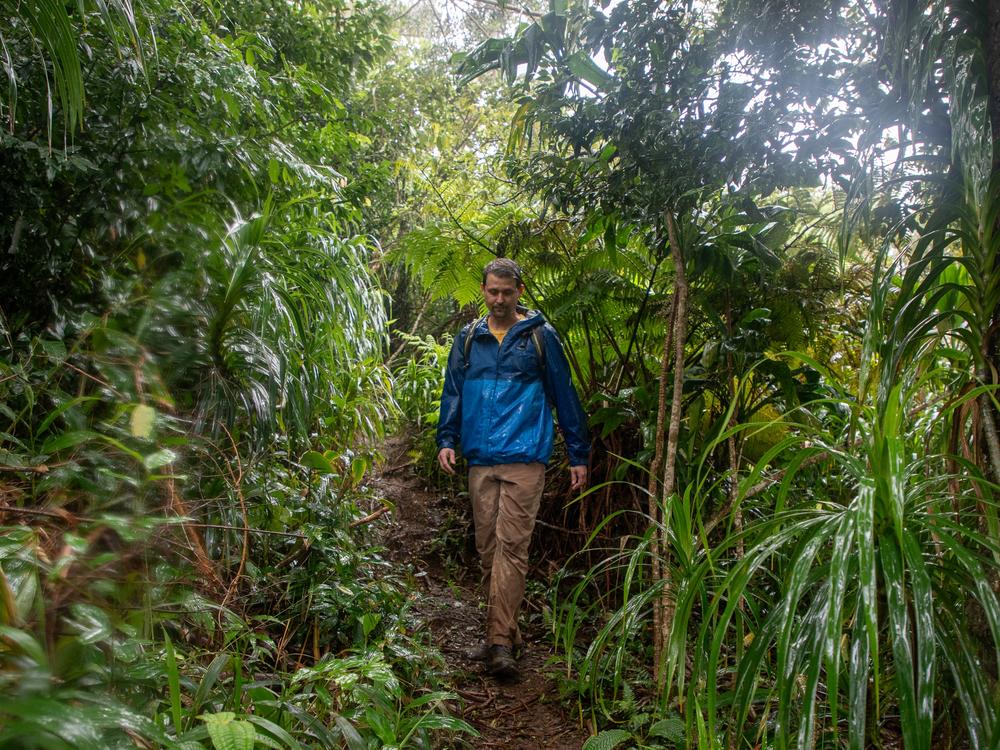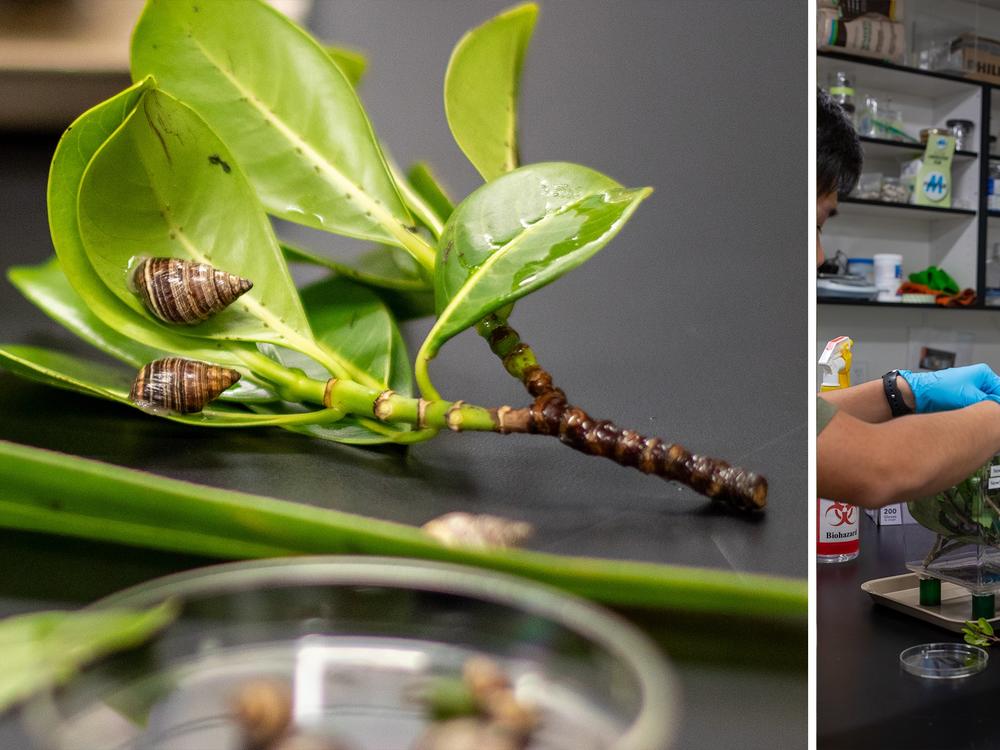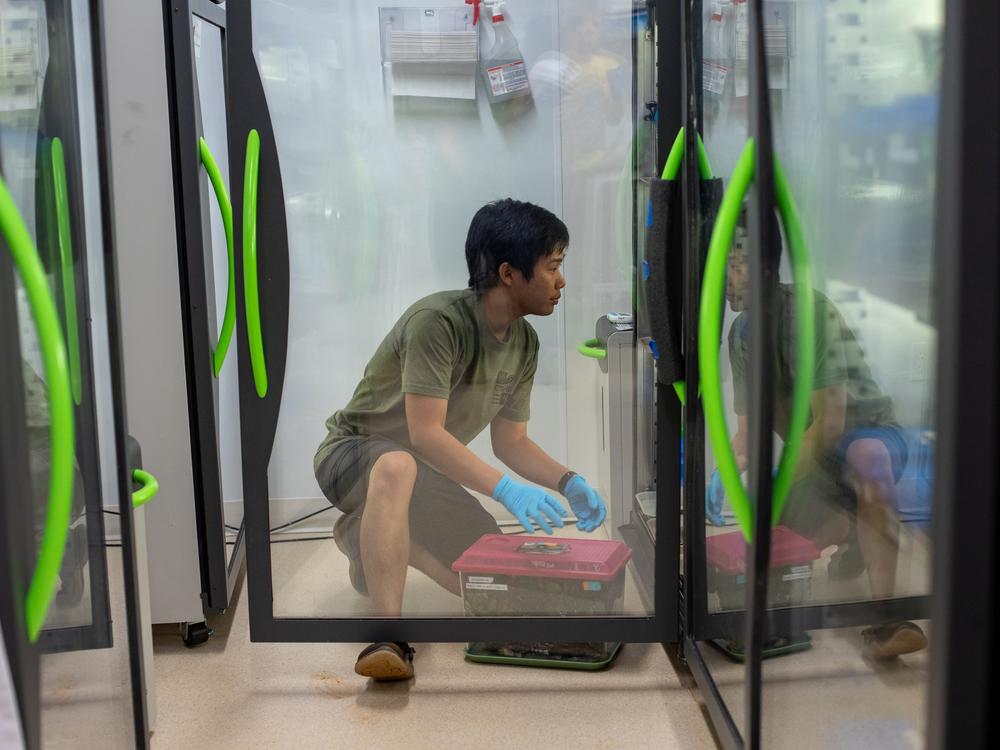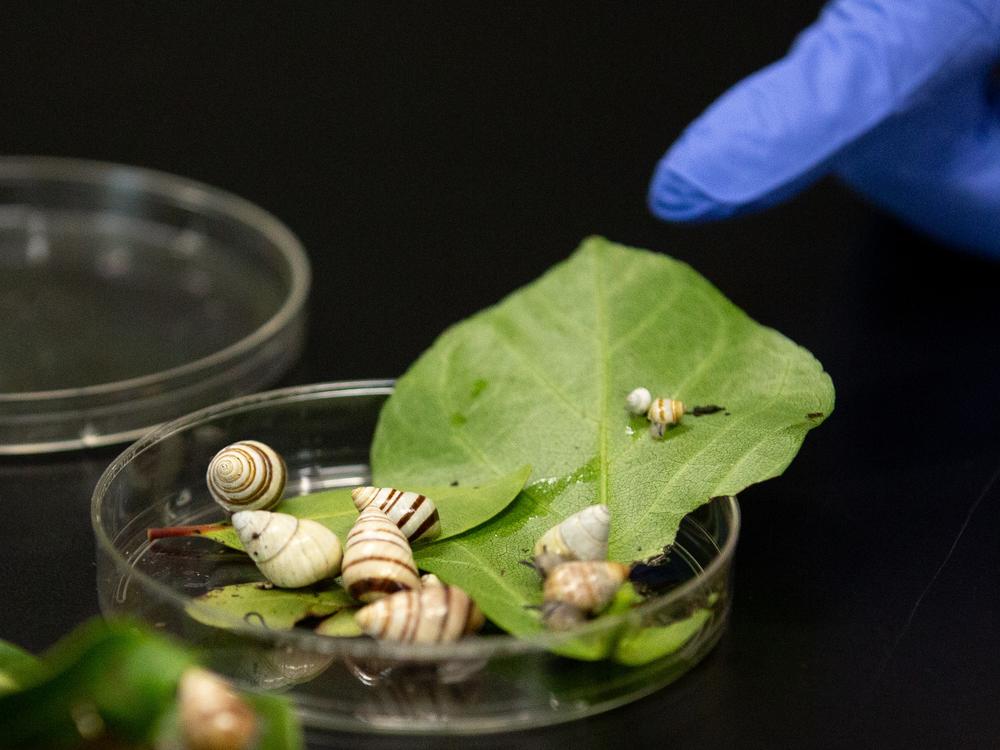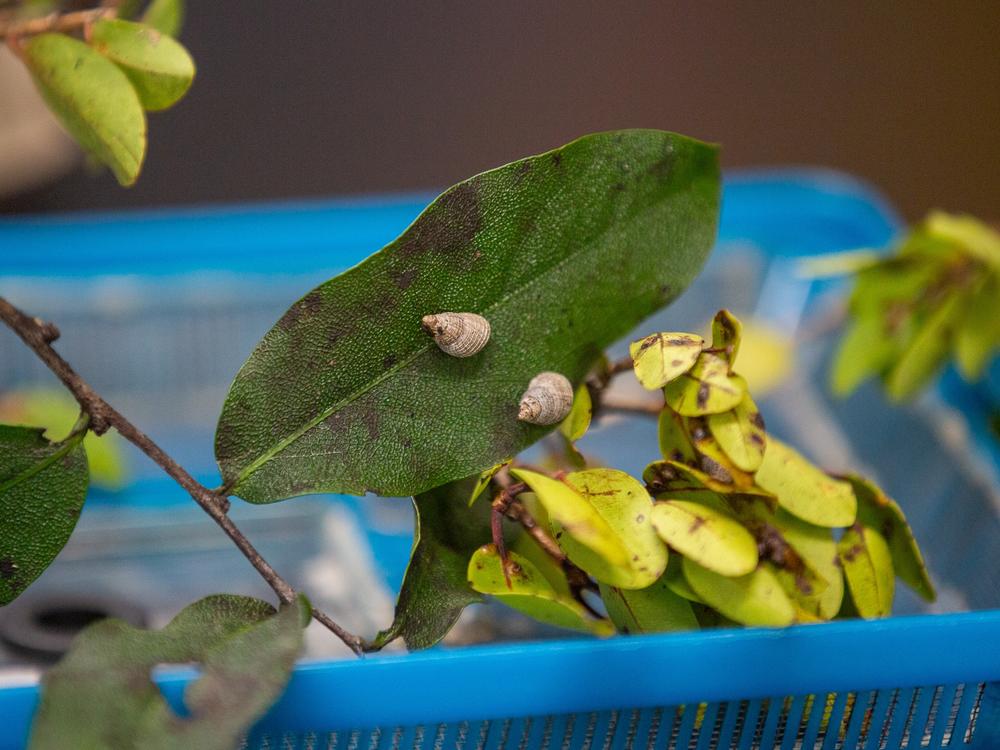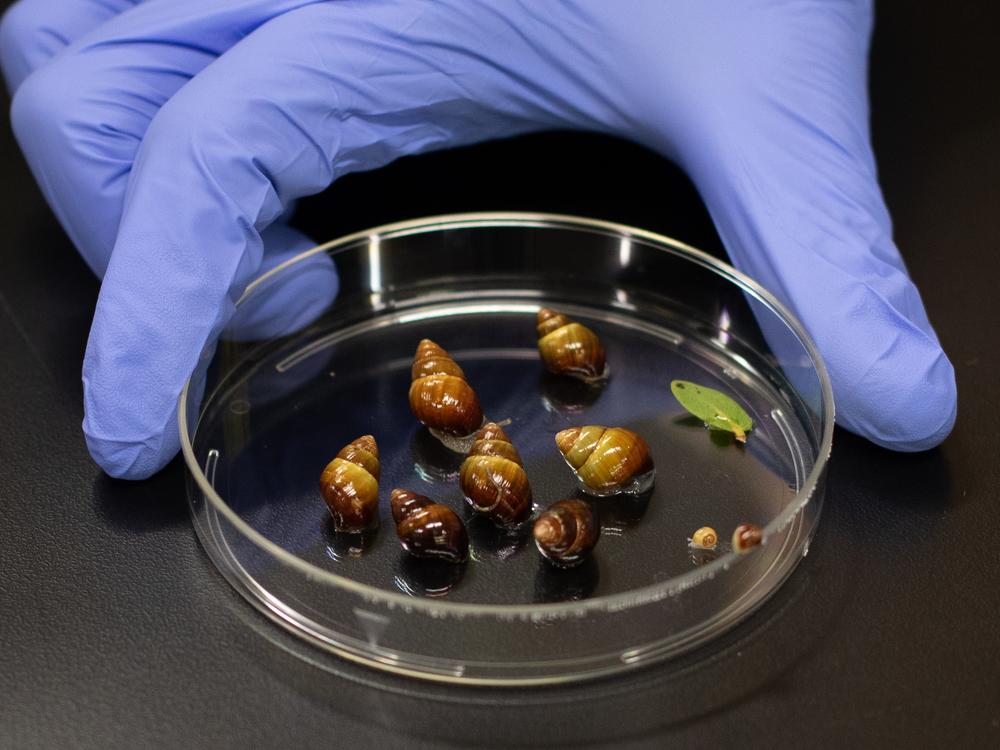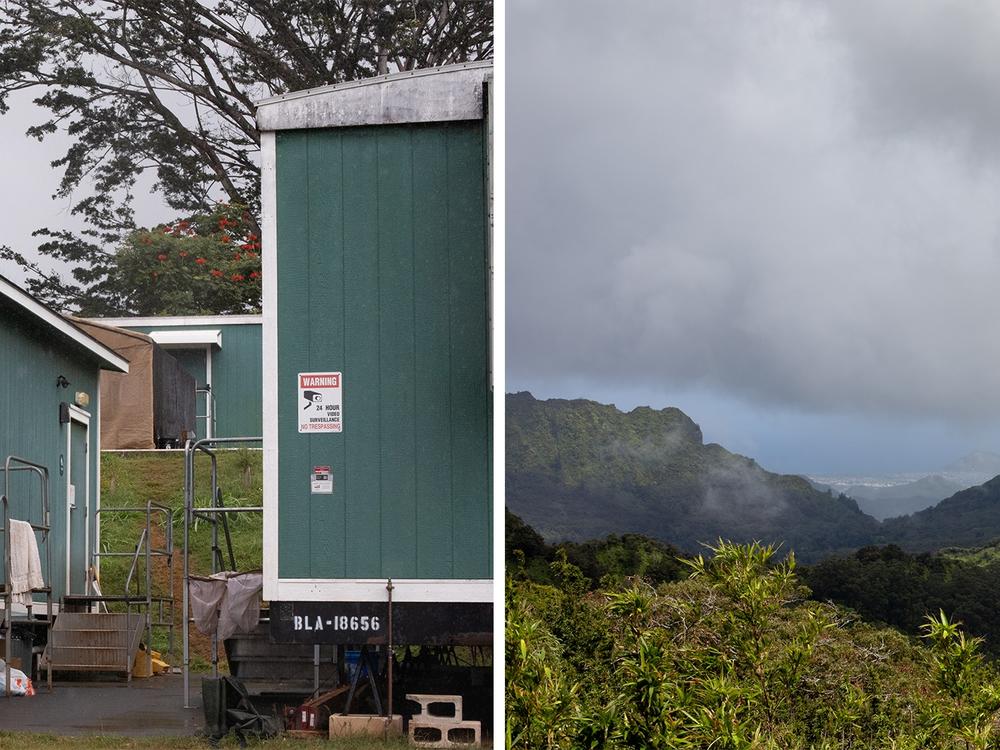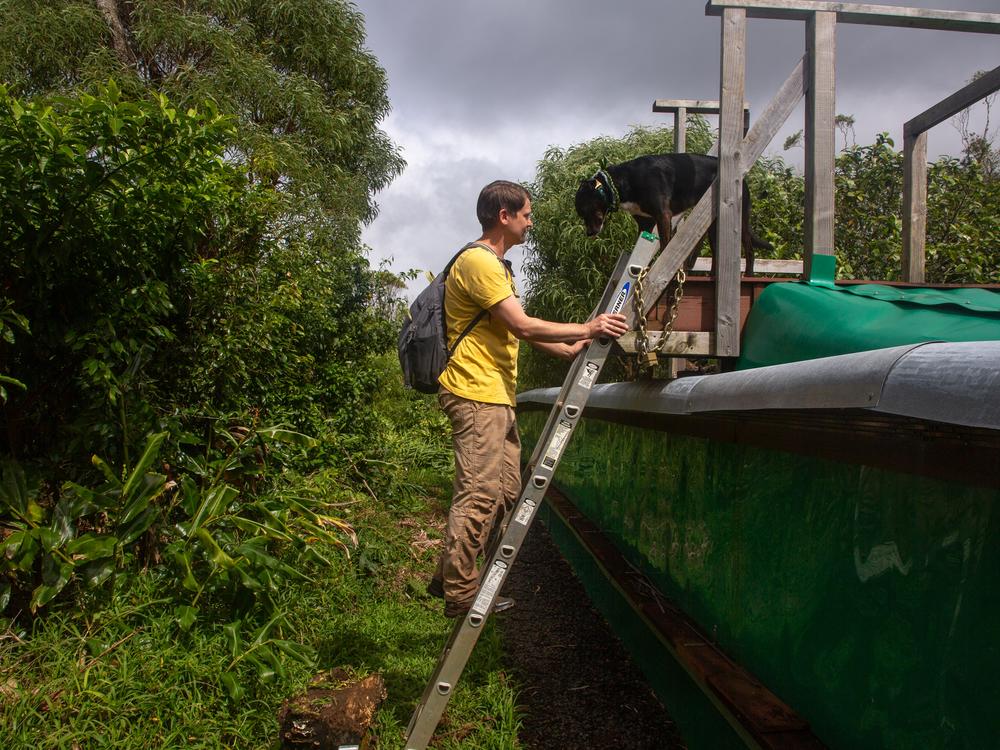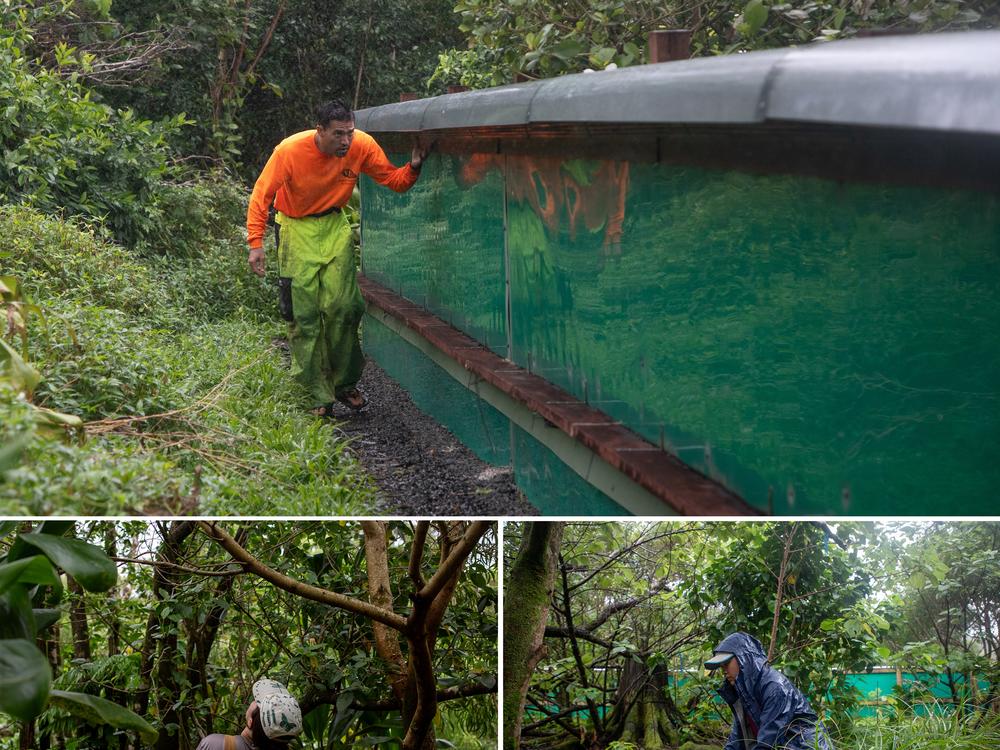Section Branding
Header Content
What it’s like to care for some of the most endangered animals on Earth
Primary Content
When Hurricane Douglas came barreling toward Oahu in 2020, David Sischo quickly packed up and drove to higher ground. But he wasn’t evacuating his family. He was evacuating snails.
Sischo works with some of the rarest endangered species on the planet, kāhuli — Hawaii’s native tree snails. The colorful, jewel-like snails were once so abundant, it’s said they were like Christmas ornaments covering the trees. Almost all of the 750 different species were found only in Hawaii.
Today, more than half of those species are gone, the extinctions happening in the span of a human lifetime. Sischo and his team with Hawaii’s Department of Land and Natural Resources have the heavy task of saving what’s left.
To stave off extinction, 40 species of snails, each about the size of a dime, live in human care inside an unremarkable trailer near Honolulu. For some, it’s the only place they’re found, their wild populations having completely disappeared.
“Most people, when they think endangered species going extinct, they think of pandas and tigers and elephants, but imagine having 40 different panda species that are all as rare as pandas are,” Sischo says. “That’s what this facility is.”
This winter, one species of snail will inch toward an auspicious milestone. It will be released in a special enclosure in the mountains of Oahu, one that has been painstakingly prepared to give the snails the best chance of survival in their natural environment.
Still, the outlook for Hawaii’s snails is uncertain, symbolizing a new era in the conservation of endangered species. Around the world, plants and animals are being brought into captivity as a last-ditch effort against extinction. But as the climate heats up and invasive species continue to spread, many have no clear path to return to nature in the near-term. That could mean they stay in human care, isolated in zoos for the imperiled.
In the face of the biodiversity crisis, many wildlife biologists say there’s no other choice.
“These are biological treasures that are irreplaceable,” Sischo says. “It is now or never. What we manage to keep on Earth will be what the next generation is able to put back.”
Inside a snail emergency room
Around 1 million species of plants and animals are at risk of extinction around the planet, according to a United Nations report. With habitat loss and temperatures rising with climate change, the biodiversity crisis is only accelerating and the effects can be cumulative. Lose enough species and an ecosystem can crumble like a house of cards.
“I don’t think people realize how fast things are changing,” Sischo says. “It’s happening, like right now as I’m talking to you, there’s species blinking out, out in the wild right now.”
To keep that from happening to Hawaii’s native snails, Sischo never turns off his phone. They rely on life support systems in the Snail Extinction Prevention Program trailer, kept in environmental chambers that control temperature and release mist to simulate their native rainforest habitat. Sensors are set up to detect any problems, alerting Sischo and his team 24 hours a day.
The rows of plastic tanks, same as the pet store variety, hold some of the rarest animals there are.
Sischo pulls out one with snails the size of a fingernail hiding among the leaves. It’s Achatinella fulgens, a snail with a pale yellow shell and a bold black stripe swirling around it. Most are withdrawn into their shells because they’re nocturnal, but a small one gingerly pokes out its antenna.
“They’re really beautiful,” Sischo says. “I’ve never had anyone come in here before and not leave thinking the snails were really cool and cute.”
Other snails have intricate stripe patterns, almost like they're sporting a plaid shirt. One snail has a shell like a miniature cinnamon roll. Some are almost iridescent, glowing with golds and greens.
“Our tree snails are known as the jewels of the forest,” he says. “The islands were dripping in snails. They were everywhere.”
Hawaii’s tree snails play a crucial role in the ecosystem, having evolved over millions of years on the isolated islands. They don’t actually eat leaves, instead eating the fungus that grows on them. That helps keep the native trees clean and recycles nutrients in the forest. The snails also hold an important place in Native Hawaiian culture, their shells used to make lei.
“In Hawaiian tradition, snails sing,” Sischo says. “They represent voice. So they were probably one of the most revered invertebrates in the world.”
Hungry like a wolf
Hawaii’s tree snails were no match for the barrage of changes that humans brought. Rats eat snails, and they arrived on ships, both Polynesian and European. The snails’ habitat disappeared as Hawaii’s forests were cleared for agriculture. But the biggest threat came in the form of another snail.
In the 1950s, a predatory snail was introduced to Hawaii from Florida. The rosy wolf snail was released to control another invasive snail, but as so many invasive species stories go, it quickly spread. Rosy wolf snails are exceptionally good at eating native snails, hunting them down by following their slime trails and ripping them from their shells.
“When they encounter a slime trail, they know the direction it was going,” Sischo says. “Once they’re locked in on a trail from a native snail, they go right up to it. There’s no getting away.”
As hundreds of native snail species began disappearing, Sischo and other biologists realized the only way to save them was to bring them into captivity. A population of Achatinella fulgens, the snail with the bold stripe, was known to persist in a group of trees that somehow hadn’t been invaded by rosy wolf snails. But a heavy storm hit, causing the trees to fall in a landslide. Sischo’s team found only six of the snails on the ground and collected them, just barely escaping extinction.
Other attempts weren’t so lucky. One species thought to be extinct was rediscovered in a tree, but it was too late by the time Sischo’s team hurried back to collect them.
“It was gut-wrenching to know we had that chance, and they were gone,” he says. “And that species is extinct now.”
And then there’s George, the only remaining individual of Achatinella apexfulva. It lived in Sischo’s lab, but with no remaining potential mates, died as the last of its species.
Sleepless nights
Even for the snails secured in captivity, recovery is slow. Hawaii’s native snails are 5 years old when they start reproducing and give live birth to a single baby. Over a year, they only produce between one and five offspring in all. Growing the population from a small number of individuals can be a decades-long process.
Inside the lab, there are also risks lurking. The snails need fresh native plants for food, so the team is continually in the process of cleaning the tanks, removing old leaves (without missing a snail) and replacing them with new leaves. But the plants can carry pathogens that kill the snails, potentially wiping out an entire species.
“It is super stressful,” Sischo says. “All of us feel it. People might think it’s silly to feel that for snails, but if we mess up, it’s over for a species. So yeah, I have sleepless nights.”
Sischo didn’t dream of being a snail expert as a kid but was introduced to them as part of a science internship as an undergraduate. The snails “picked me,” he says with a laugh. Now, with so many of them in peril, Sischo says the only choice is to keep going, despite the long hours.
“I feel it’s unacceptable to let a species go,” he says. “I feel like we have to try, at the very least. We’re not going to be able to save everything, but we have to try.”
A predator-free patch of forest
This winter, after decades in captivity, one snail will make a momentous journey back to its forest home. In the mountains of Oahu, Sischo’s team has been carefully preparing a small patch of forest for Achatinella fuscobasis to return to.
Survival in the wild means keeping out predators, so Sischo’s team has constructed a wall, Jurassic Park-style. The large fence is covered in rosy wolf snail deterrents. There’s a rough metal patch they don’t want to crawl on, a sharp metal lip they get stuck under, and a wire at the top to give them a small shock.
Around the quarter-acre enclosure, rosy wolf snails are not hard to spot. Sischo’s team lets down a ladder to get inside and then immediately pulls it up again.
“We don’t take any chances,” he says. “So we go in and then pull up the drawbridge. It’s almost like they’re trying to storm the castle.”
Removing the rosy wolf snails from inside the enclosure is an even harder task. For the last year and a half, a field team has periodically searched the ground and trees for them, examining each blade of grass. Rosy wolf snail eggs are as small as a Tic Tac.
“We line up in a line and then comb through the leaf litter,” says field technician Sidney Stiefel, with a half-smile. “You’re on your hands and knees, in the rain, in the hot sun, feeling and looking.”
Returning the native snails to the wild will be a big moment, but it’s not about setting them free in nature. At the most, it’s about creating redundancy, another population that helps ensure their survival if something goes wrong.
“A lot of people, when you’re talking about endangered species, you’re talking about recovery,” Sischo says. “But we’re not. We’re talking about stabilization. Keeping them on Earth is what we’re trying to do.”
There are 13 of these snail enclosures across several Hawaiian islands now, with 10 more being planned. Sischo says the challenge is scaling up, given how labor-intensive they are. Finding the resources to save snails can be a tough sell, especially compared to some of the better-known endangered species.
The future of Hawaii’s treasured snails is not guaranteed. Real recovery will mean finding a way to control rosy wolf snails on the landscape, a solution that still is elusive. In the meantime, Sischo’s team will keep going.
“It’s like caring for a critically ill patient or family member,” he says. “I feel like I have to do this. What we do now will matter to the trajectory of the Earth.”
